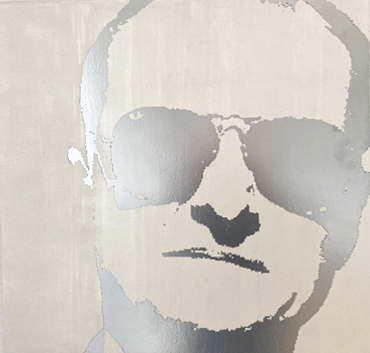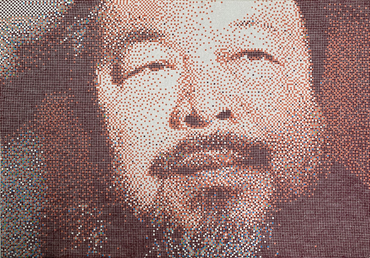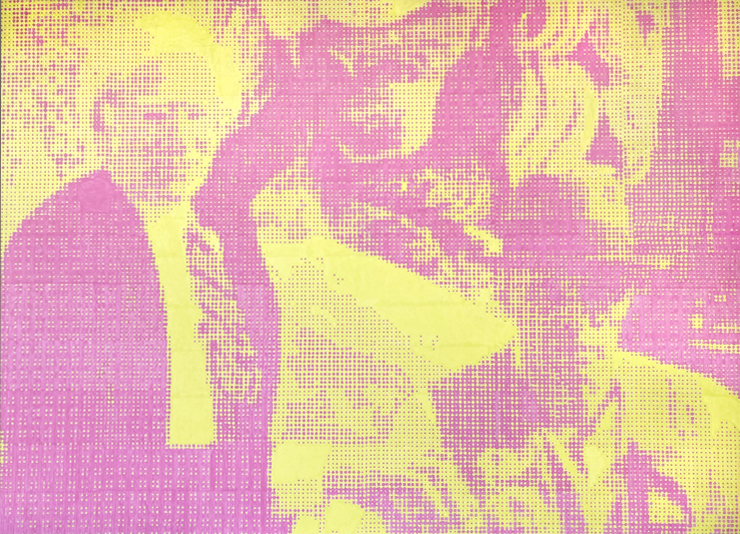morePlatz
architecture / urbanism / art / office / publications / contact deutsch

|
In the early 2010s, the first cross-stitch embroidery images were created, which inspired a whole series of portraits with their low-resolution pixel technology and simplified color spectra. While earlier pictures still appear almost photo-realistic, the embroidery technique brings in a new tendency towards an independent visual language. The invention of the pixel as the smallest unit of the image enables the rapid duplication of pictures and has been used since analog printmaking processes. In combination with digital image processing, the resolution of the images into their smallest components results in an infinitely editable surface. By rasterizing the image its visual information becomes rational and countable. JES - RGB, 2011, emboidery, 60 x 60 cm |
Starting from private contexts, the subjects span ever larger radii over time. Le Corbusier & Albert Einstein, 2017, acrylic on canvas, 180 x 90 cm
|
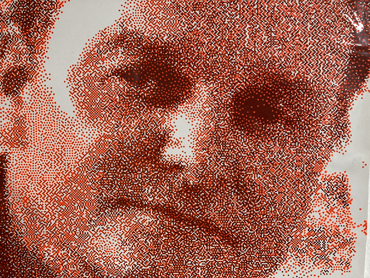 |
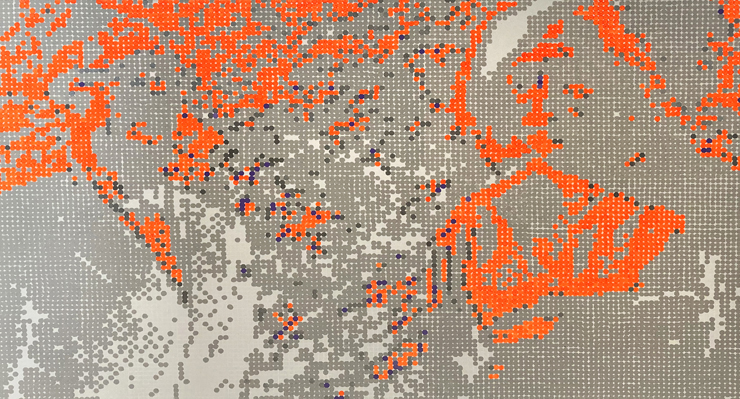
When the portrait of Gorbachev was embroidered in 2013, the annexation of Crimea by Russia under Putin and the current war in Ukraine was not foreseeable. The former General Secretary of the CPSU and Nobel Peace Prize winner made the fall of the Berlin Wall possible, the end of the Cold War and German reunification in 1990, but also triggered the collapse of the Soviet Union. His policies of transparency and restructuring left a profound mark on our generation. While it has almost exclusively brought benefits to the West, it is viewed very critically in the former Soviet states. Michail Gorbatschev, 2013, embroidery, 45 x 45 cm
|
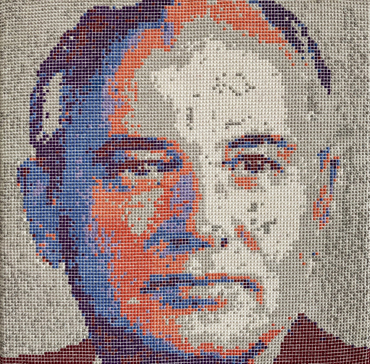 |
|
|
|
The increased understanding of the effects of political decisions on one's own life while working on the EUROPA light installation is expressed in the double portrait of Merkel and Macron. The central role of Franco-German relations in European politics has become even more crucial since Brexit. The friendly relationship and the pro-European orientation of both countries is essential for a free and secure life in Europe. The original photo was taken during the commemoration ceremony at the end of the First World War. Merkel / Macron, 2018, acrylic on canvas, 80 x 80 cm
|
 |
